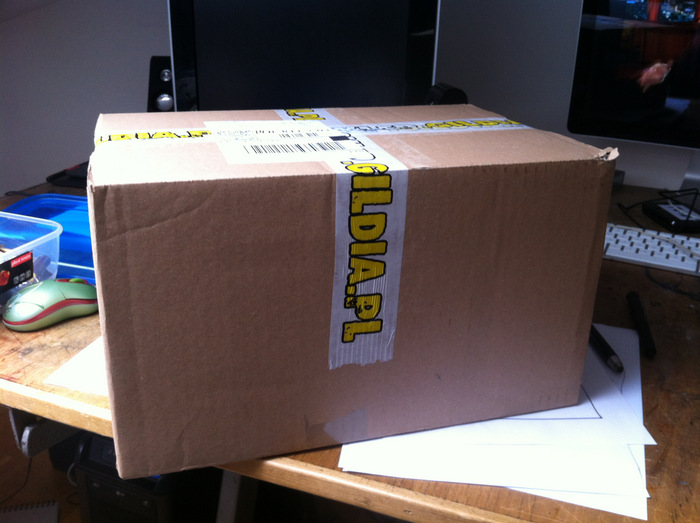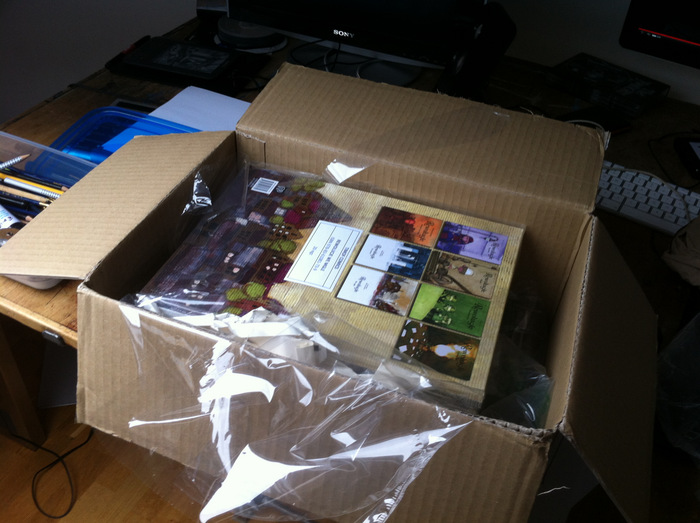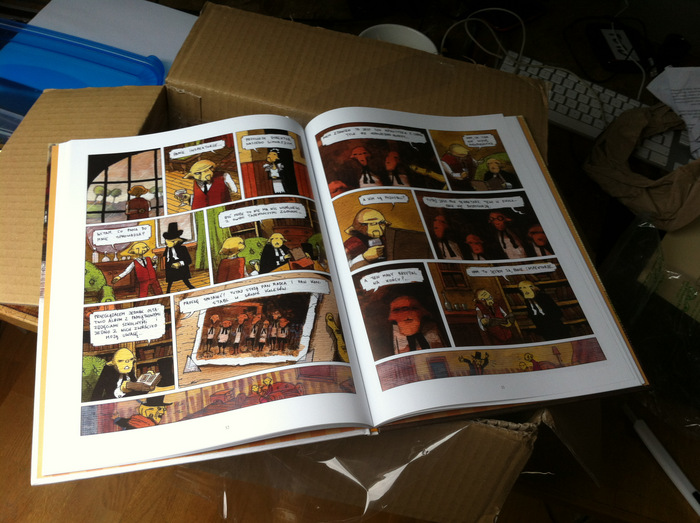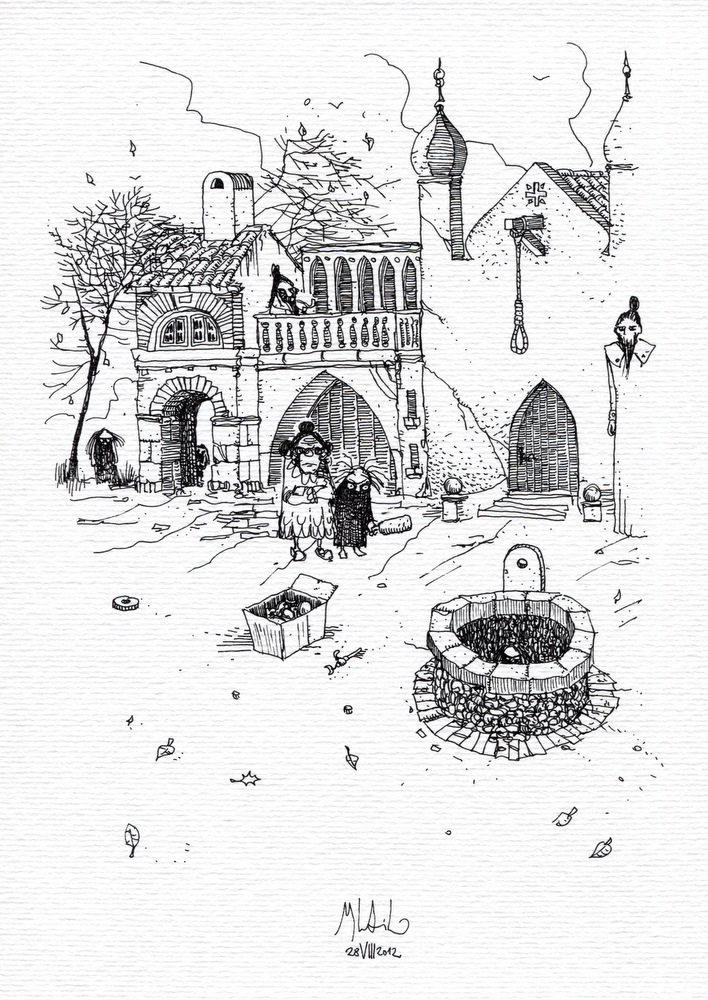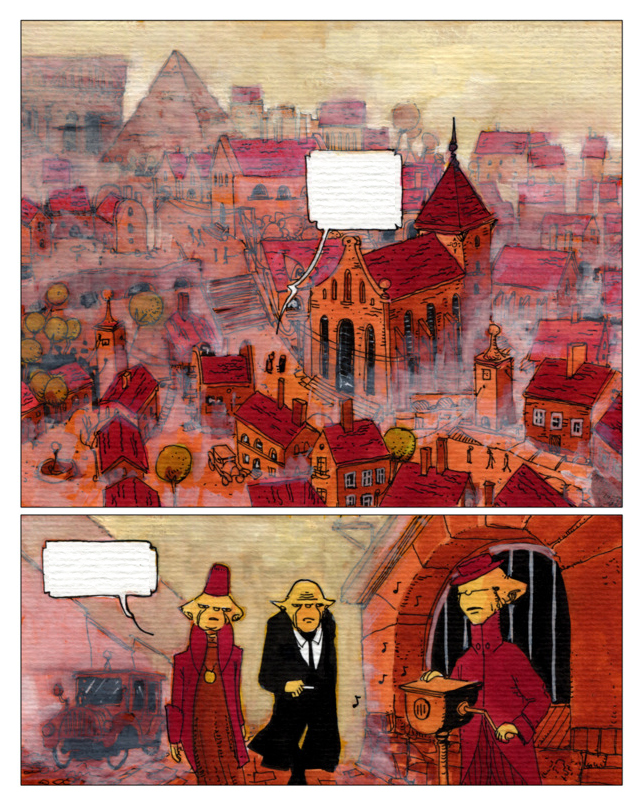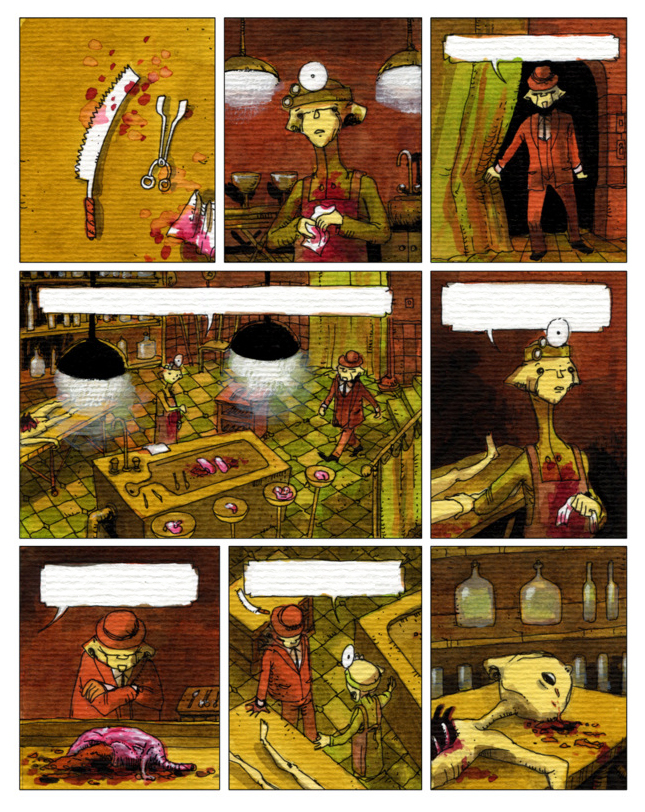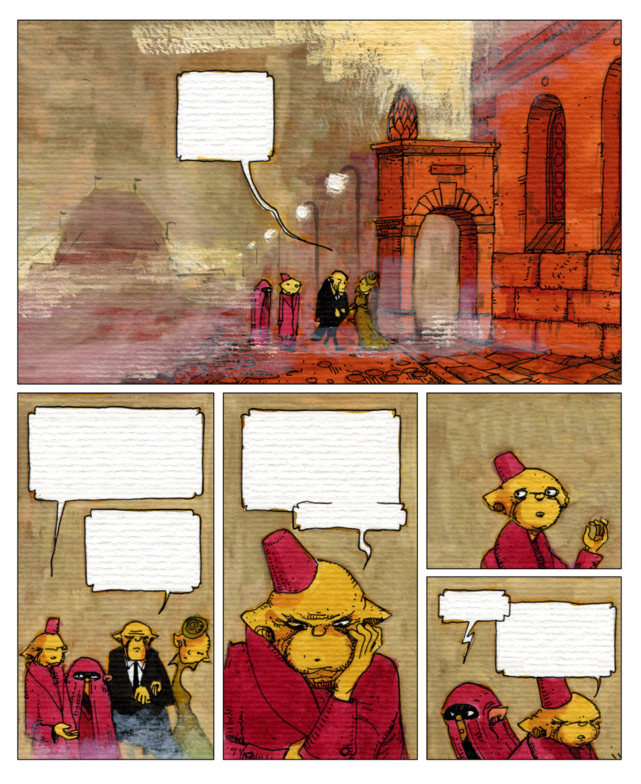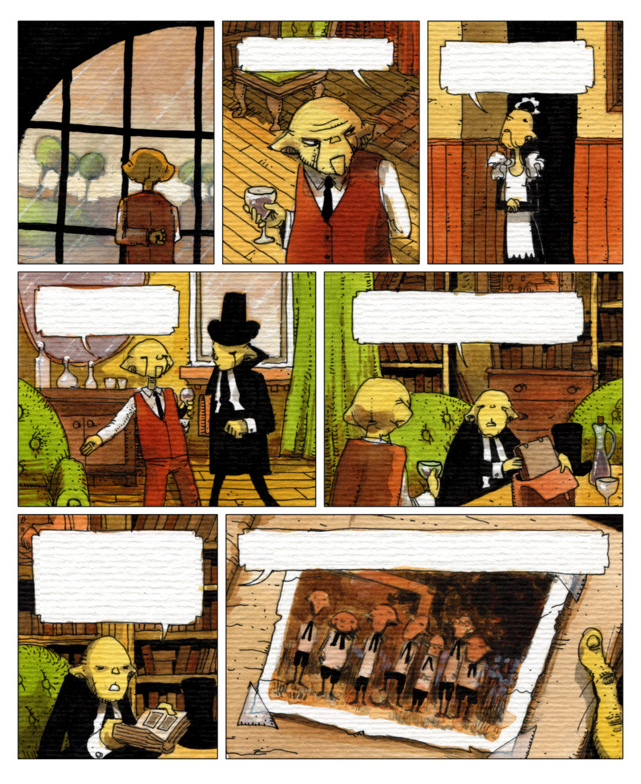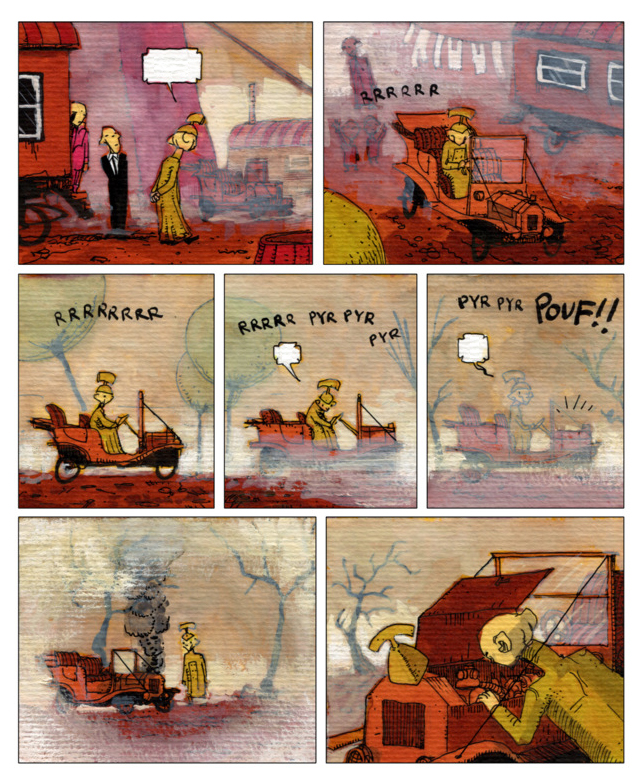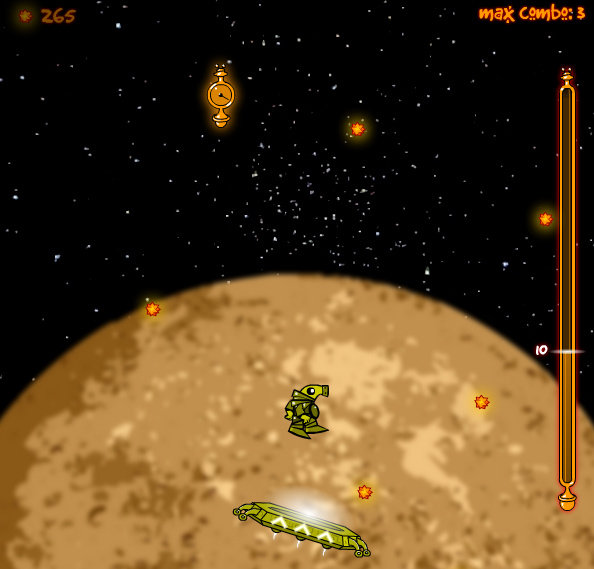Mission to Mercury
August 25, 2012
A short trip down the memory lane. First of all this game sports the most classic “skutnik” gameplay. Falling coins, 30-second timer and time power-ups. Just like in good old 2004 when the squirrels started jumping on my screen. Other thing is that I created this gameplay in 2008 and it was just sitting there on my hard drive for the past four years. Since we’re in a purge-all year – the game is finally out. Funny thing – I called this movement engine wii, because how you have to swing the landing pad to steer the alien. Anyways. Enjoy.
46/46
August 13, 2012

So, this happened.
Let’s go back to the beginning. I’m a man of challenge. It’s not that I like to challenge myself – it’s that I have to challenge myself in order to do better.
It’s always been like this. Find something hard to accomplish – and then just do it. Last year for example it was 24 hour comic project. It’s a one-day event, where you sit and draw for 24 hours straight with no sleep nor breaks, your goal is to create 24-page comic book. Here’s what came out of it last year. Although challenging, I must agree, this project has it’s flaws. The resulting comics is often crappy, rushed and basically not good enough.
Enter the new challenge.
Some might argue, but in my opinion 24/24 is a lot easier than 46/46.
46 pages in 46 days that is. A full european-sized comic album, created in a steady pace of one page per day. 46 days, merely a month and a half. How is this harder? Well, for 24 hour comic you have to sacrifice just one day. And a night. For 46 day comic you have to sacrifice 46 days. Well, maybe not whole days, but most of working hours. And you have to stay on track all the time. There will come days that you just can’t draw. Or you shouldn’t. Maybe someone’s birthday party, maybe a sporting event, maybe a Sunday dinner at your parents’ house. And then you have to just work through it. If you don’t do a page one day, you have to do two the next day. No excuses.

I started on June 15th and finished on July 30th and that gives a nice, round number of 46 days. Some might argue that this kind of work is also rushed and crappy. Well, you be the judge.
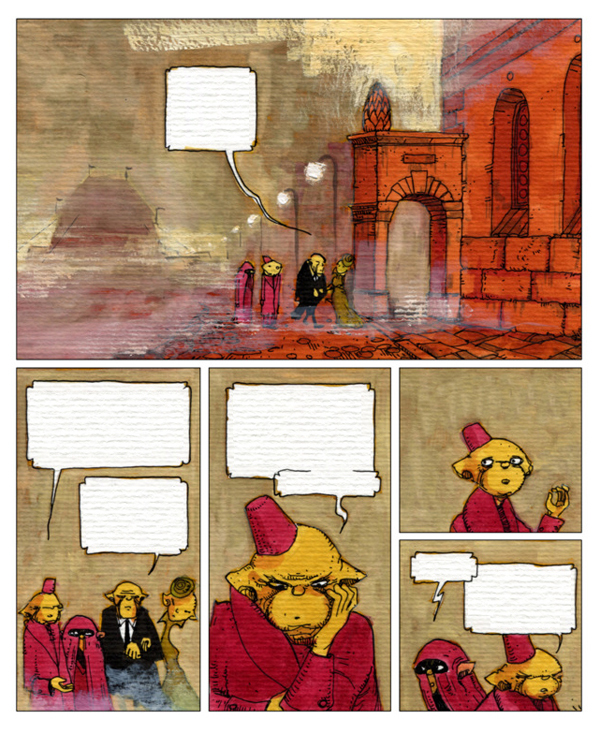
The limit of one page per day gives enough time to do that the right way. At least in my opinion. I admit, this challenge is hard, but the payoff is well worth it. Not only did I get a comic book, which is already in the publishing house (coming out in s eptember), but there are other, even more important benefits.
I freed my mind. I know I can do more than I thought I could.
I know I can work harder. It is doable. I feel that I can do anything after this.
I feel ready.
Do I feel like something important happened? Yes, I do. Here’s an obligatory photo of one proud self time-stamping this occasion.
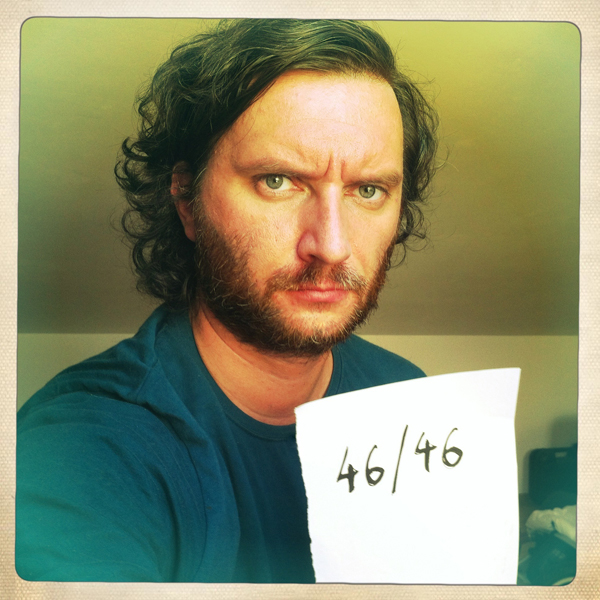
13 best polish adventures – Submachine
August 10, 2012
[…]
Gry przygodowe znalazły się w rynkowej niszy i przez praktycznie całą pierwszą dekadę obowiązkiem było przy każdym kolejnym omawianym tytule gatunku pisać, że “czas gier przygodowych przeminął”. Stare rynkowe mechanizmy przestały działać, więc gry musiały się zmienić. Jedną z nowych forum klasycznego point’n’click stały się flashowe “escape roomy”, produkcje amatorskie, kameralne, po prostu mniejsze. Submachine Mateusza Skutnika nie było na tym polu pierwsze, ale na przestrzeni lat zebrało grono oddanych fanów i doczekało się kolejnych części.
[…]
[source: Polygamia]
pastel on Weld
August 8, 2012
As technology advances, more and more platforms are being developed and marketed as mediums for high quality storytelling. Movies, once considered the ultimate audiovisual experience, are being challenged by a new wave of exciting and ambitious media projects. Television series like Game of Thrones and Breaking Bad are every bit as complex and captivating as any Scorsese film. The Guild, a hilarious and cleverly written web series, boasts millions of views on YouTube. You don’t have to be a fanboy into guns and explosions to enjoy video games like Skyrim and Portal. If you’re anything like me, you can spend hours exploring and admiring Skyrim’s vast and highly detailed universe, talking to game characters, and learning their stories if you don’t feel like completing missions.
My personal favourite new media projects are online computer games. Gone are the days of poor graphics, simple plots, and horrible sound design. You need not look any further than Pastel Games if you’re in the mood to escape from everyday life and enjoy stunning artwork.
Pastel Games is a studio based in Poland that creates free, award winning flash adventure games for computers, IPhones and IPads. Founded in 2004 by Karol Konwerski and Mateusz Skutnik, their work is driven by a passion for gaming, artistry, and storytelling. Skutnik, an architect and graphic novelist, has a unique vision and striking aesthetic that has helped him cultivate a large and loyal fan base. The Facebook page for Pastel Games is filled with requests from fans begging them to continue developing their favourite game series, and create new ones.
Pastel Games builds on the point and click adventure template established by games like King’s Quest and Monkey Island. Puzzles are more difficult, story themes are darker, and narratives often provide insight as to where culture and technology are potentially headed. For example, The Fog Fall series offers a bleak, “your interests versus mine” forecast predicting how society would restructure itself in the aftermath of a nuclear zombie holocaust. Each game is a meticulously crafted labour of love that’s so rich and exquisitely structured that the player becomes one with its quirky world. I often feel as though I’m immersed within the hand drawn visuals, and am always a little sad when I’m finished a game and forced back into the real world.
Recently, Pastel Games created two flash games featuring characters from the TV show Rizzoli and Isles for Turner Network Television. Promotional games for shows and movies are a fun and innovative way to advertise them, and I’m hoping that Pastel Games gets more work in the same vein. In the interim though, I’m happy to keep replaying their lovely games.
[source]
« Previous Page — Next Page »








